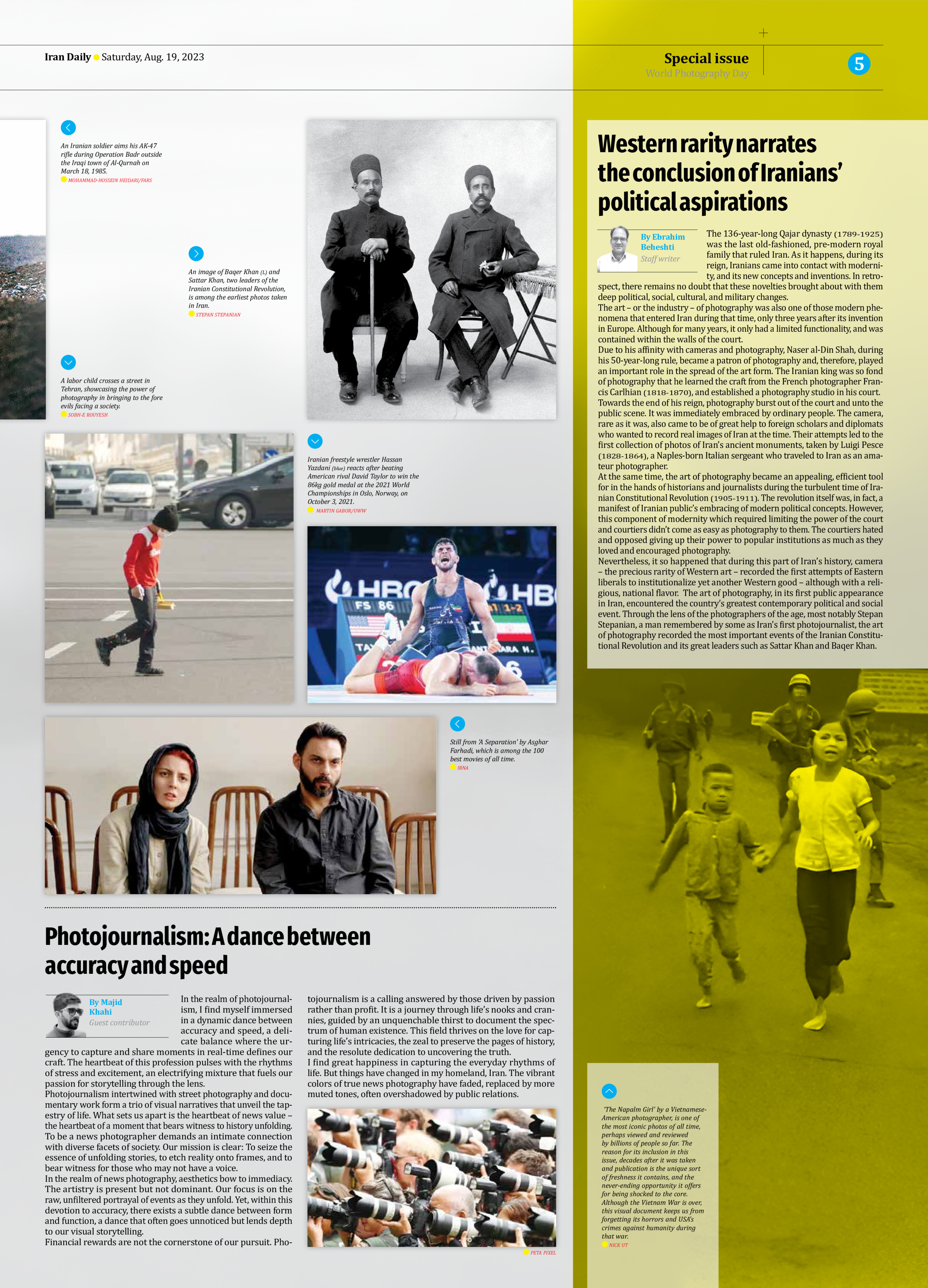
Western rarity narrates the conclusion of Iranians’ political
By Ebrahim Beheshti
Staff writer
The 136-year-long Qajar dynasty (1789-1925) was the last old-fashioned, pre-modern royal family that ruled Iran. As it happens, during its reign, Iranians came into contact with modernity, and its new concepts and inventions. In retrospect, there remains no doubt that these novelties brought about with them deep political, social, cultural, and military changes.
The art – or the industry – of photography was also one of those modern phenomena that entered Iran during that time, only three years after its invention in Europe. Although for many years, it only had a limited functionality, and was contained within the walls of the court.
Due to his affinity with cameras and photography, Naser al-Din Shah, during his 50-year-long rule, became a patron of photography and, therefore, played an important role in the spread of the art form. The Iranian king was so fond of photography that he learned the craft from the French photographer Francis Carlhian (1818-1870), and established a photography studio in his court.
Towards the end of his reign, photography burst out of the court and unto the public scene. It was immediately embraced by ordinary people. The camera, rare as it was, also came to be of great help to foreign scholars and diplomats who wanted to record real images of Iran at the time. Their attempts led to the first collection of photos of Iran’s ancient monuments, taken by Luigi Pesce (1828-1864), a Naples-born Italian sergeant who traveled to Iran as an amateur photographer.
At the same time, the art of photography became an appealing, efficient tool for in the hands of historians and journalists during the turbulent time of Iranian Constitutional Revolution (1905-1911). The revolution itself was, in fact, a manifest of Iranian public’s embracing of modern political concepts. However, this component of modernity which required limiting the power of the court and courtiers didn’t come as easy as photography to them. The courtiers hated and opposed giving up their power to popular institutions as much as they loved and encouraged photography.
Nevertheless, it so happened that during this part of Iran’s history, camera – the precious rarity of Western art – recorded the first attempts of Eastern liberals to institutionalize yet another Western good – although with a religious, national flavor. The art of photography, in its first public appearance in Iran, encountered the country’s greatest contemporary political and social event. Through the lens of the photographers of the age, most notably Stepan Stepanian, a man remembered by some as Iran’s first photojournalist, the art of photography recorded the most important events of the Iranian Constitutional Revolution and its great leaders such as Sattar Khan and Baqer Khan. aspirations







